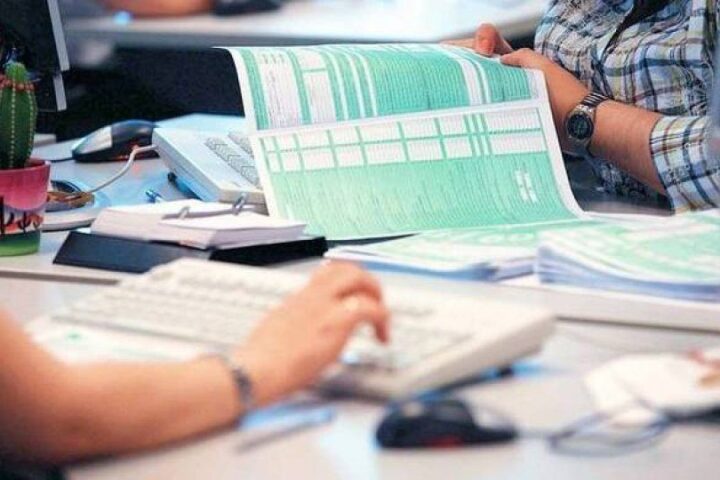* May have to wait longer for ‘investment grade’ rating
By Kyriacos Kiliaris
The Cyprus Republic is to see a series of sovereign credit rating evaluations from the major rating agencies over the next three months, starting with Standard and Poors’ report expected on March 16, that could see Cyprus being moved into investment grade for the first time since 2011.
The island’s economy is currently rated by S&P at BB+, just one notch below the much sought-after investment grade. Moreover, the rating agency had changed the outlook for Cyprus’ economy to ‘positive’ from ‘stable’ last September.
The report is expected amidst optimism from government officials, with Finance Minister Harris Georgiades claiming there is significant improvement in the state’s finances. Georgiades based his optimism on figures showing that the island’s economy performed ‘better than expected’ in 2017 with a 3.9% expansion.

Limassol-based rating agency Capital Intelligence recently gave the Cypriot economy a positive outlook based on “the better than expected performance of the island’s economy and public finances”, which is expected to allow “public debt to decline at a faster pace than already envisaged”.
Rating agency Fitch in a commentary on the Cyprus economy earlier this year noted that, “while it can be difficult to estimate how far a post-crisis economic recovery is cyclical and the degree to which it signifies changes in trend growth, the strength of the recovery, and experience in Ireland and Spain, suggest that a medium-term growth rate of 2 per cent is plausible”.
Fitch further expressed the view that “coupled with gradually increasing effective interest rates and continued primary surpluses, this would see debt-to-GDP fall to around 80 per cent in 2022.”
However, the agency continues to add that some risks remain, with “the main risk to the economic recovery, and a key sovereign rating weakness, is the very weak asset quality in the banking sector following the 2013 crisis. Non-performing exposure (NPE) ratios remain stubbornly high, 43% of gross loans at end-October 2017 and constrain new lending”, it added.
DBRS acknowledged the progress seen in the past five years by the first Anastasiades administration, suggesting that the president’s re-election on February 4 offered “a solid mandate for policy continuity.”
“The scope of his win gives President Anastasiades a solid mandate for a second consecutive term. He campaigned on his record and his proposed policies are known,” DBRS said in a note on February 7, adding that “the government remains committed to addressing the country’s challenges. These include reducing banks’ high non-performing loans, lowering still high private sector debt, maintaining healthy growth and reducing the public debt ratio.”
DBRS concluded that it “also expects Cyprus to maintain its solid economic and fiscal performance. This is reflected in the Positive trend on the ratings.”
While optimistic of the general trend of the Cypriot economy, financial analysts on the island appear to be reserved over the prospect of Cyprus finally putting its hands on the ‘Holy Grail’ for the first time since 2011, during the upcoming rating round.
Giorgos Sklavos, Hellenic Bank’s Communication Director, said that one should be cautious while talking about the prospects of a possible upgrade of the Cyprus economy from the rating agencies.
Sklavos told the Financial Mirror that while Cyprus has improved the figures, “the issue of non-performing loans may possibly hinder any thoughts of upgrading our economy”.
The bank’s communication officer also pointed out that some structural changes that should have taken place are still pending, something which will not go down too well with the rating agencies.
“Agencies will probably prefer to hold back and wait to see whether the new government will keep on track with reforms kicked off during the president’s previous term,” he added.
On a slightly more positive note, Fiona Mullen, Director of Sapienta Economics and a regular Financial Mirror commentator, said that “the S&P March report could see Cyprus grasping the Holy Grail”.
“If they do put Cyprus into investment grade, it will primarily be because of the fiscal side. The government posted a comfortable budget surplus of 1.9% of GDP in 2017. It also managed to push the debt/GDP ratio below 100% of GDP last year, thanks to early repayment of IMF and old Central Bank debt,” explained Mullen.
However, she added that there are factors that could jeopardise a possible upgrade.
“If S&P keeps Cyprus in a junk rating, then this will be a clear signal that the banks and their non-performing loans are a big cause for concern. The banks have cut NPLs by a lot, but the NPL ratio is still 43% and the European Central Bank (ECB) is piling on the pressure to take bigger structural measures this year,” she added. As the economist explained, a worst-case scenario could see the ECB forcing much bigger provisions at the end of the year, which in turn could result in a capital crisis for the island’s banks.
“It is also possible that S&P will look at what has been going on offshore and see that as a risk of conflict. So, while Cyprus certainly deserves an ‘investment grade’ rating because of all the work done to clean up public finances, I don’t think it is a dead certainty”, concluded Mullen.
Ioannis Tirkides, Economic Research Manager at the Bank of Cyprus, and head of the Cyprus Economic Forum, appeared to be positive stating that a rating upgrade, which although may not take place this time round, is not far. However, as the BoC Research Manager explained, while there are reasons to be optimistic about the rating outlook, there are also reasons to be cautious for the long-term prospects.
“Cyprus’ sovereign risk ratings are recovering for a number of good reasons, including the strength of the recovery, macroeconomic rebalancing and debt reduction, and restructuring in the banking sector. Thus, the sustainability of the recovery, loan deleveraging and the reduction in non-performing loans, and of course the progressive reduction in the ratio of government debt to GDP, have been the factors upon which all rating agencies have been basing their assessments for the Cyprus sovereign”, he explained.
Tirkides added that we must pay caution to the changing balance of risks of the Cyprus economy most importantly because of its structure.
“Being a small open economy, Cyprus has excessive reliance on a large and rising export sector, particularly services in tourism and international business activities. Exports in turn are highly concentrated. In tourism there is a high concentration of arrivals from the UK which accounted for 34% of total arrivals in 2017, and on Russia, which accounted for 23% of total in the same year. Also, the international business services sector is exposed to economic weakness in Russia. These structural characteristics make the Cyprus economy especially vulnerable to external developments,” he explained.
“However, I tend to believe that the underlying fundamentals justify a return to investment grade by one rating agency at least, either during this round of reviews or at the next in the autumn,” concluded Tirkides.







